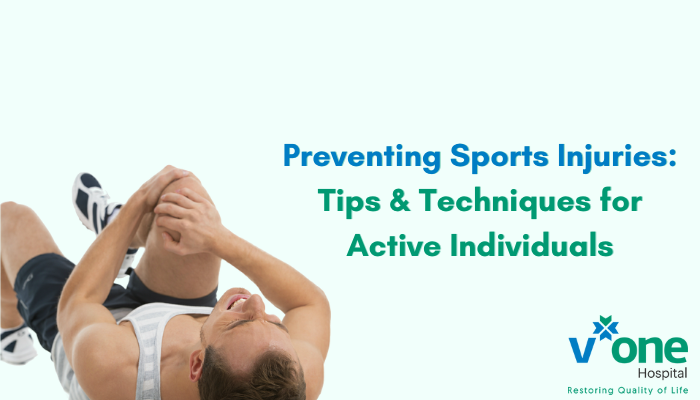Preventing Sports Injuries: Tips & Techniques for Active Individuals
Engaging in sports and physical activities offers numerous benefits, including improved cardiovascular health, enhanced mood, and increased physical fitness. However, participation in sports also carries the risk of injuries, ranging from minor sprains and strains to more severe fractures and ligament tears. Fortunately, many sports injuries are preventable with proper preparation, conditioning, and technique. In this blog, we will explore practical tips and techniques to help active individuals minimize the risk of sports-related injuries and enjoy their favorite activities safely.
Warm-Up and Stretching
Before engaging in any physical activity, it is essential to warm up the body and prepare the muscles, tendons, and ligaments for exercise. A proper warm-up routine increases blood flow to the muscles, improves flexibility, and reduces the risk of injury. Incorporate dynamic stretches, such as leg swings, arm circles, and lunges, to loosen tight muscles and enhance range of motion. Focus on targeting the specific muscle groups that will be used during your sport or activity.
Use Proper Equipment
Wearing appropriate sports equipment and protective gear is essential for injury prevention. Ensure that your equipment fits properly and is in good condition. For example, athletes should wear supportive footwear that provides stability and cushioning, especially for high-impact activities like running and basketball. Additionally, use protective gear such as helmets, pads, and braces as recommended for your sport to reduce the risk of head injuries, fractures, and joint sprains.
Gradual Progression
Avoid the temptation to push yourself too hard or progress too quickly when starting a new sport or exercise routine. Gradually increase the intensity, duration, and frequency of your workouts to allow your body to adapt and build strength gradually. Sudden spikes in training volume or intensity can increase the risk of overuse injuries such as tendonitis, stress fractures, and muscle strains. Listen to your body’s signals and adjust your training accordingly to avoid overtraining and burnout.
Cross-Training and Rest Days
Incorporating cross-training activities into your fitness routine can help prevent overuse injuries by giving specific muscle groups a break while still maintaining overall fitness. Mix up your workouts with activities that target different muscle groups and movement patterns, such as swimming, cycling, yoga, or strength training. Additionally, prioritize rest days to allow your body to recover and repair itself between workouts. Rest is essential for tissue healing, muscle recovery, and preventing fatigue-related injuries.
Focus on Technique and Form
Proper technique and form are critical for preventing sports injuries and maximizing performance. Whether you’re lifting weights, running, or playing a team sport, focus on maintaining good posture, alignment, and biomechanics to reduce stress on the joints and soft tissues. Consider working with a qualified coach or trainer to learn correct techniques and receive feedback on your form. Pay attention to your body’s alignment, avoid overloading certain joints or muscles, and modify exercises as needed to prevent injury.
Stay Hydrated and Fuel Your Body
Proper hydration and nutrition are essential for supporting physical performance, recovery, and injury prevention. Drink an adequate amount of water before, during, and after exercise to maintain hydration levels and replace fluids lost through sweat. Consume a balanced diet rich in nutrients, including carbohydrates, protein, healthy fats, vitamins, and minerals, to fuel your workouts and support muscle repair and growth. Consider consulting with a registered dietitian or sports nutritionist to develop a personalized nutrition plan tailored to your needs and goals.
Conclusion
By incorporating these preventive strategies into your sports and fitness routine, you can reduce the risk of sports-related injuries and enjoy a safe and rewarding active lifestyle. Remember to prioritize proper warm-up and stretching, use appropriate equipment and protective gear, progress gradually, incorporate cross-training and rest days, focus on technique and form, and fuel your body with proper hydration and nutrition. By taking proactive steps to prevent injuries, you can stay healthy, active, and injury-free for years to come.

